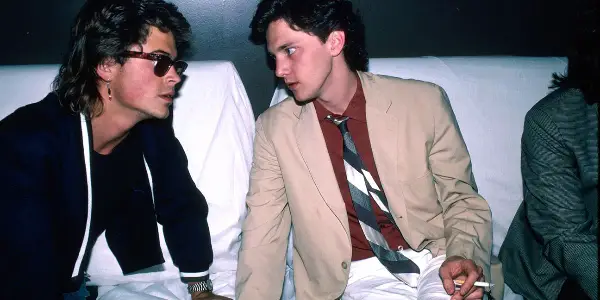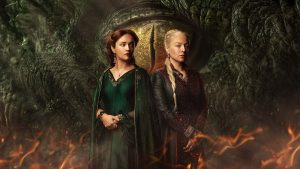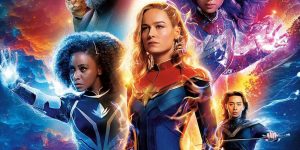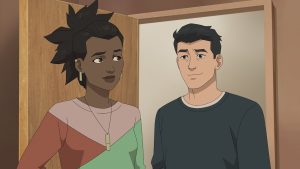
Watching Andrew McCarthy‘s new documentary there are several salient questions asked that are worth considering: Do you remember where you were the first time you heard the term Brat Pack? The phrase became synonymous with the up-and-coming stars who took the 1980s by storm. Also, what were the emblematic Brat Pack movies, and who was even in the Brat Pack?
For the record, the term has always seemed ubiquitous to me and if you watched John Hughes‘s The Breakfast Club and Joel Schumacher‘s St. Elmo’s Fire, you’d have a good starting place of who was in this cadre of young actors. Coming up with anything definitive is a bit more dicey.
In the years since shooting to stardom in movies like Pretty in Pink, Andrew McCarthy reimagined himself as a travel writer. There’s some truth to this documentary being a travelogue of sorts as he meets up with his former peers, talks shop, and excavates their shared mythology.
McCarthy makes it very clear from the outset that whatever the nebulous association of “The Brat Pack” entailed, it wasn’t representative of his experience of what was going on in the moment. In fact, from his vantage point “The Brat Pack” was actually damaging.
The quippy phrase was coined in a 1985 New York Magazine spread written by David Blum focused on an up-and-coming Emilio Estevez and the hot young things who appeared to run in the same circles, among them Rob Lowe, Judd Nelson, and even Sean Penn and Tom Cruise. They are canonized as primary players although it’s curious how reputations have evolved with time.
The article is very male-oriented drawing a line from Frank Sinatra‘s Rat Pack fraternity to this hip, emerging generation. There are even a few comparisons to Marlon Brando and James Dean. Of course, in 1985 this was all conjecture. What it did was inject them into the public consciousness with the name catching fire across mainstream media.
Part of McCarthy‘s odyssey comes with making peace with the past by reconnecting with some of his contemporaries he hasn’t seen in over 30 years. It’s evident that he wants to get at the name from the inside so they can tell their own story. With it comes a process of self-reflection that only comes with time.
The Inner Ring
It feels like the audience for Brats is massive because just like this group, their audience has grown up themselves, got married, had kids, and yet I would wager that these films have stayed with them. They were a reflection of their own lives during their most formative adolescent years.
source: Tribeca Film Festival
The first person McCarthy seeks out is Estevez who seems reticent to broach the subject, having turned down countless retrospectives looking back on his career. Still, he took the call to be interviewed. McCarthy recounts how he always thought of Emilio as the insider of some prestigious club while he was on the outside looking in. But that was hardly the truth.
It brought to mind C.S. Lewis‘s essay on “The Inner Ring” where he says:
“Three or four people who are together for the sake of some piece of work exclude others because there is work only for so many or because the others can’t in fact do it…There’d be no fun if there were no outsiders. The invisible line would have no meaning unless most people were on the wrong side of it. Exclusion is no accident; it is the essence.”
The difference here is that this was not a self-created entity or a selective social club…It was a construct of the media. Both Estevez and McCarthy were trying to make their way and avoid the narratives society tried to box them in with; they wanted to be seen as serious performers.
The fact these two men we thought were lifelong social companions hadn’t seen each other in decades dismantles the myth almost instantaneously. Because the romantic in all of us wants to believe that there is this rarified club from our adolescence and they all still hang out. We want an inner ring because as humans we have the desire to categorize people, pair off, and, ultimately, find a tribe where we belong.
These are the kind of wish fulfillments The Brat Pack mystique is predicated on, and it helps when there are bits of lore that kindle the flames. In a story that sounds written for Hollywood, Rob Lowe and McCarthy reminiscence about how they crossed paths with Liza Minnelli and wound up wiling the early morning hours away with Rat Pack extraordinaire Sammy Davis Jr. It reads like a pitch-perfect crossover and a changing of the guards.
source: Tribeca Film Festival
McCarthy recounts to Ally Sheedy how she drove him home from set with the top down on her jeep, and he felt totally present in the moment and aware of how deliriously happy he was. But this was all short-lived. After the article came out, Sheedy labels the ensuing reaction as schadenfreude — there was a gleeful pleasure in their misfortune and missteps.
Avatars of Gen X
Although there are a few noticeable absentees like Molly Ringwald, Judd Nelson, and Anthony Michael Hall, I was impressed by the breadth of people McCarthy searched out as well as the amount of material crammed into an hour and a half.
Tim Hutton is mentioned in the original piece and McCarthy hails him as “The Godfather of The Brat Pack” because he presaged all their success with his Oscar-winning turn in Ordinary People. The film took adolescence seriously, and he received the kind of critical recognition they all aspired to.
McCarthy also pays a visit to Malcolm Gladwell for some historical context. Gladwell sees the Brat Pack as a lovely metaphor for the generational changes that occurred as Gen Xers displaced the culture of their parents. Practically it’s difficult to have shared cultural touchstones of the same magnitude now — references everyone can point to — because we are a more fragmented society.
Gladwell says something telling in that youth coming of age in the ’80s (including himself) were using characters onscreen to connect with, and then build out their own impressionable identities. These men and women were avatars and perfect representations of their youth. It didn’t matter if the circumstances were completely different on the inside.
Since McCarthy is front and center, we get a sense of his own listlessness as he tried to figure out who he was, going from a NYU student playing Frisbee in the park to, suddenly, being a household name. He had a myriad of reactions: thrilled and terrified then medicating with alcohol.
source: Tribeca Film Festival
The insidious voice in the back of my head wondered if this documentary was partially an exercise in navel-gazing. Here we have these highly successful public figures woebegone about the onerous weight of fame and how difficult their lives were.
Demi Moore shares with McCarthy how this “againstness” they felt engenders a reaction and for each of them the “Brat Pack” moniker meant something different; they all made it about themselves. This is what most of us naturally do when we’re young and insecure.
And yet it seems fitting to extend them grace. Regardless of how famous they became, these were still young kids — some of them barely 18 — and human beings deserve dignity. Time didn’t remedy everything but it can offer some perspective.
Conclusion: Brats
One of the revelations of the documentary involves McCarthy sitting down with David Blum, the journalist who effectively changed his life forever. They seem like two cagey animals feeling each other out. However, life is a bit more nuanced than a movie pitting heroes against villains.
By the same token, two things can be true at the same time and McCarthy willingly acknowledges that something that caused him pain became a blessing for a whole host of his contemporaries.
Because when they meet him on the street, it’s almost like they’re sent back in time and gifted the memories of their youth once more. What they associate with that time is not necessarily the tumultuous upheaval of stardom or searching out an inner ring that did not exist. For them, it elicits deep fondness.
Brats is a reminder old wounds can calcify and scab over turning into the foundation for something all the more beautiful. It’s only further down the road when our insecurities have burned off, that we realize hardships can often help us grow. We wouldn’t be the same without them.
Rob Lowe has maintained a lasting career in Hollywood, but when he and McCarthy reconnect you can sense in his demeanor that he has no ill will about The Brat Pack. He embraces the goodwill infused with bearing the beloved mantle. By the end, I think McCarthy‘s there too and what’s more, he’s reunited with folks who are inextricably bonded with him for life. That in itself is worthwhile.
Actress Lea Thompson starred in Brat Pack adjacent films like Back to The Future and Some Kind of Wonderful and is married to director Howard Deutch. In one interview she said something that stuck with me.
The Brat Pack represented the last vestiges of the Old Hollywood ethos. If you think about it, it makes sense because there’s a similar cultural cachet that comes with the territory. These types of associations don’t seem to exist now; at least not in the same manner. Names and legacies fused together that capture the public’s imagination and inform the zeitgeist.
Residual baggage notwithstanding, being a part of such a definitive moment in history like this is notable, but it’s also indicative of how culture marches on like a man in motion. The Brat Pack could represent something else entirely in 40 more years, and that’s okay. We promise not to forget about them…whoever they are.
Brats streams on Hulu starting on Thursday, June 13.
Does content like this matter to you?
Become a Member and support film journalism. Unlock access to all of Film Inquiry`s great articles. Join a community of like-minded readers who are passionate about cinema – get access to our private members Network, give back to independent filmmakers, and more.




